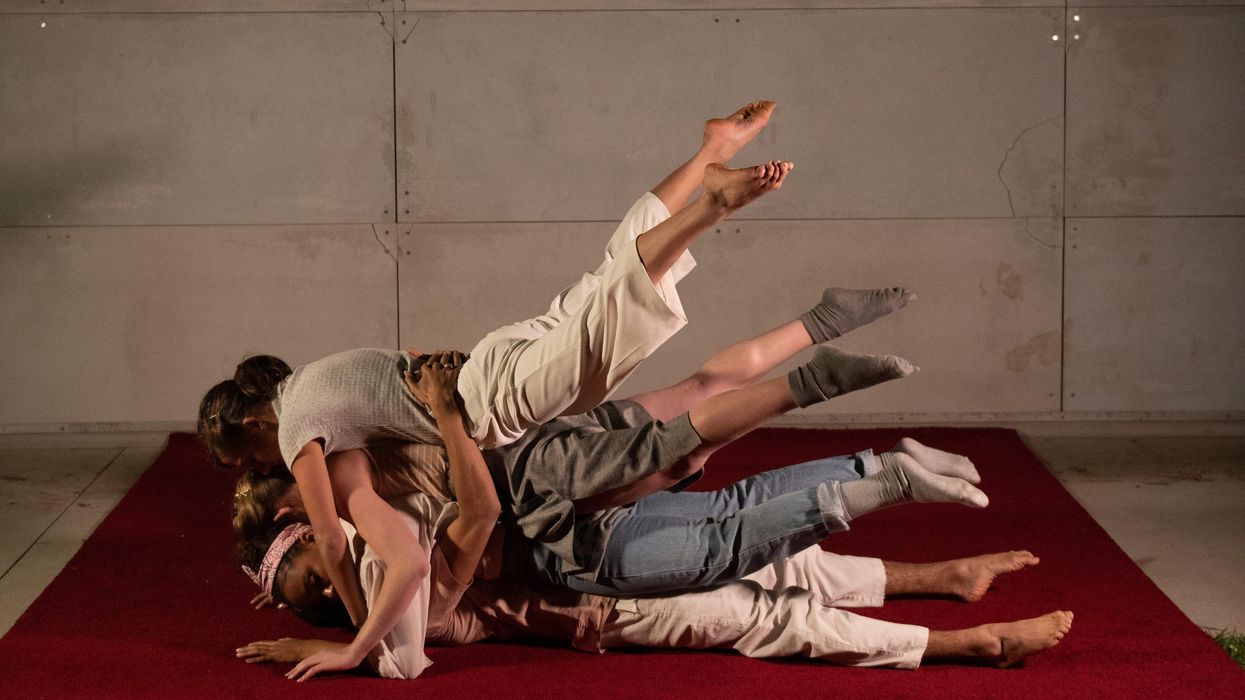4 Reasons Interdisciplinary Education Can Make You a Stronger Dancer, According to CalArts
After years spent training in their childhood studio, it can be hard for dancers to realize exactly how many pathways there are toward career success. The School of Dance at CalArts aims to show its students all of them.
Built with the intention to break barriers and bend the rules, CalArts’ interdisciplinary curriculum ensures that students take classes that cover an entire spectrum of artistic approaches. The result? A dance program that gives you much more than just dance.
Last week, Dance Magazine caught up with Kevin Whitmire, assistant director of admission for CalArts School of Dance, and recent alum Kevin Zambrano for the inside scoop on how an interdisciplinary curriculum can make you a stronger artist. Watch the full event below, and read on for the highlights.
Learn to Problem-Solve Through Art
No matter the department, CalArts teaches its students to start with a concept rather than a medium. “The idea determines the discipline,” says Whitmire, not the other way around. This way, dancers learn to work through ideas with their mind and body in sync. It’s an approach that trains the brain to problem-solve through art; for Whitmire, the process isn’t unlike the scientific method. CalArts dancers are encouraged to ask questions about the world around them, and use their movement to find the answers.
Find Your Artistic Voice
“I think in performing arts we always forget to ask the ‘Why,’ ” says Whitmire. “Why are we onstage? Why does my voice deserve to be heard? Or why is my body expressing this story?” Learning to stay aware of these questions will give more meaning to the work at hand, while also teaching students to be more intentional in all walks of life. The interdisciplinary program at CalArts places students of dance, film, music, animation and more all in the same collaborative spaces. “Exposing yourself to other art forms is one of the best ways to enrich yourself as an artist,” says Whitmire.

Trade the Image of Starving Artist for Working Professional
There’s a traditional, perhaps-outdated image of what it looks like to try to “make it” as an artist: Someone overworking themselves at a job they don’t care about in order to buy time before a big break. CalArts’ program kicks this image to the curb. “As artists, our careers started yesterday,” says Whitmire. Taking the time to explore other artistic mediums while still in college is often the best way to expand your perspective on what success actually means.
Whitmire once met a student, for example, who started at CalArts solely focused on ballet, but the connections she made with animators on campus got her passionate about motion capture, too. Now she works at Universal. The curriculum “opens up this lens of different things you can do,” says Whitmire.
Create a Varied, Flexible Career Path
After Zambrano graduated from CalArts with a BFA in dance in 2018, he’s spent time jumping from project to project—some onstage, others on camera and some that use both. It can be tricky to switch between such different environments, but Zambrano is certain his CalArts education is what makes him feel up to the task. “It’s those quick switches in your brain that you have to utilize,” he says. His years spent running between classes for different techniques, different theories or different mediums that prepared him for the real world.
A Dance Education That Keeps on Giving
Since he’s been out of college and catapulted into the professional sphere, Zambrano says he’s still gleaning lessons from his degree. “I didn’t realize the mapping of what I was learning until I put it in the real world,” he says. “And then I was like, ‘Oh, this is what they were teaching us.’ ” Armed with an interdisciplinary perspective, Zambrano now feels empowered to make his dance career as wide-ranging as possible. These days, he is guided by a question he learned to ask at CalArts: “How can I make dance the forefront and then bring in other attributes that I want to try, like film or fashion or music?” Just like his time at CalArts, it’s a question that continues to open new opportunities well beyond graduation day.




